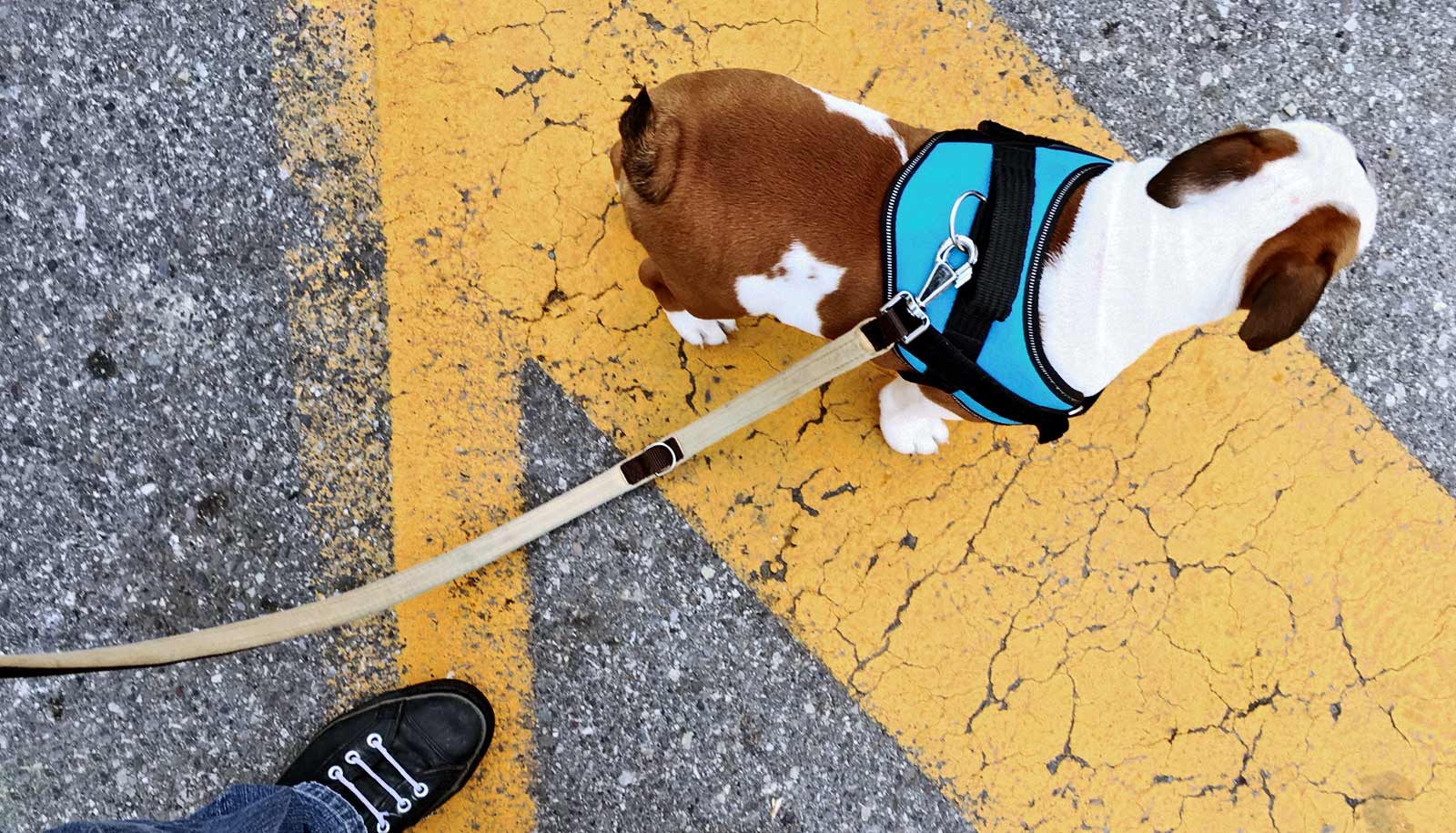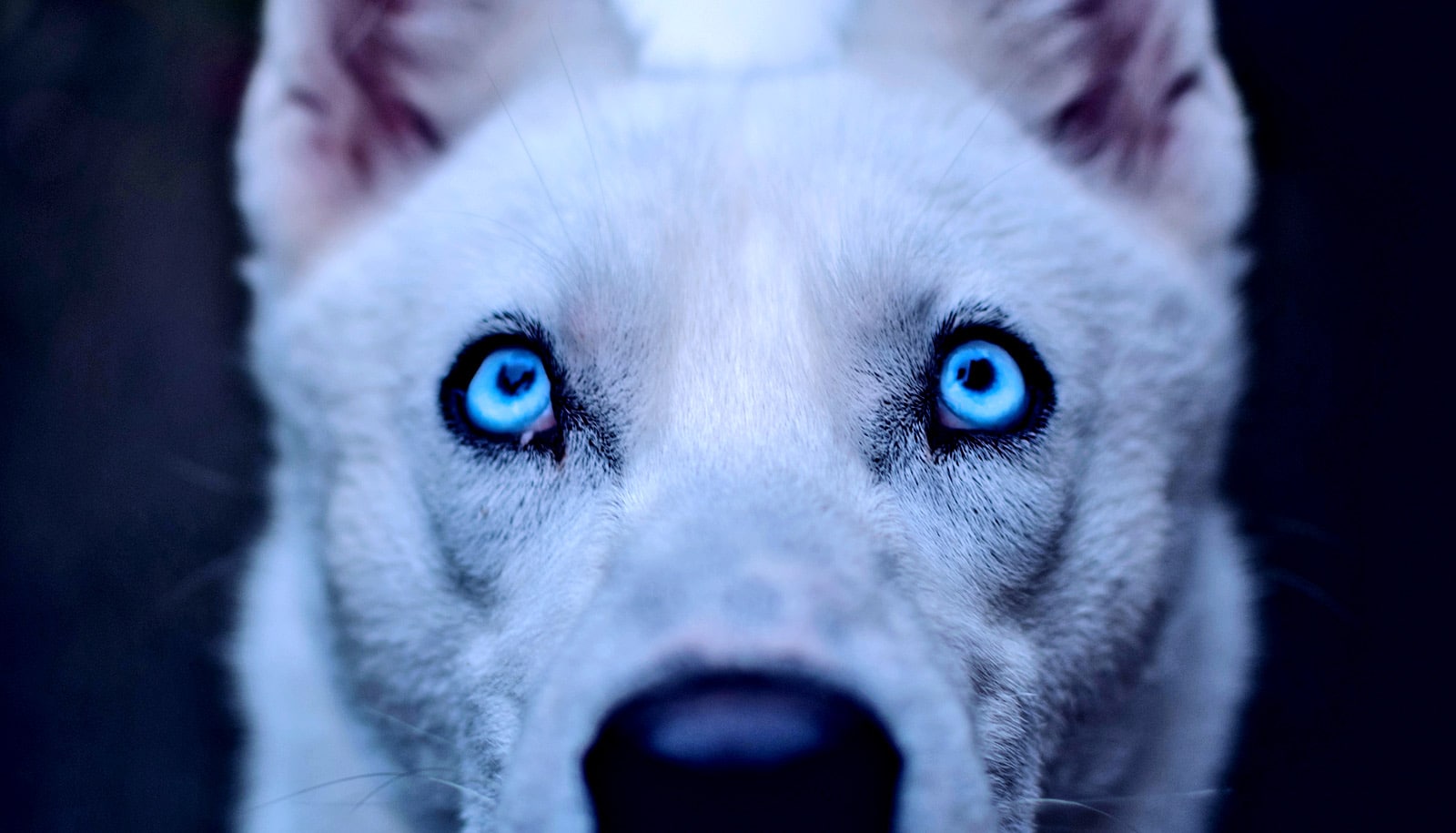New research finds the genetic basis for the unusual appearance of certain dog breeds—Boston terriers, bulldogs, and French bulldogs—and links it to a rare inherited syndrome in humans.
Bulldogs, French bulldogs, and Boston terriers aren’t the only dogs with short, wide heads, but they do share a feature not found in other breeds: a short, kinked tail or “screwtail,” says Danika Bannasch, professor in the population health and reproduction department at the University of California, Davis, School of Veterinary Medicine. These three breeds all lack the vertebrae that make up the tail bone, she says.
As reported in PLOS Genetics, researchers sequenced the whole genome—the entire DNA sequence—of 100 dogs, including 10 from screwtail breeds. The dogs were all privately owned pets seen at the UC Davis Veterinary Medical Teaching Hospital.
The researchers then searched through the DNA sequences to find changes associated with screwtail breeds. From more than 12 million individual differences they were able to identify one mutation, in a gene called DISHEVELLED 2 or DVL2. One percent of the bulldogs and French bulldogs sampled had the variant and it was very common in Boston terriers.
This kind of whole genome comparison is relatively new, Bannasch says.
“It’s a very rare human disease but very common in dogs, so that could be a model for the human syndrome.”
“Normally, we would have first had to identify a region DNA and work from there,” she says. “We could look at breed-specific traits, but not as well as we can now.”
Henry Ho, a professor at the UC Davis School of Medicine, studies similar genes in humans. Mutations in the related DVL1 and DVL3 genes cause Robinow syndrome, a rare inherited disorder in humans with striking similar anatomical changes—a short, wide “babyface,” short limbs, and spinal deformities.
Further, Robinow patients and the screwtail breeds also share other disease traits, such as cleft palate. In both humans and dogs, DVL genes are part of a signaling pathway called WNT involved in development of the skeleton and nervous system, among other things, says Peter Dickinson, professor of surgical and radiological sciences at the School of Veterinary Medicine.
Researchers characterized the screwtail DVL2 protein product and pinpointed a key biochemical step in the WNT pathway that the mutation disrupts. The finding further suggests that a common molecular defect is responsible for the distinct appearances of both Robinow patients and screwtail dog breeds.
The DVL2 screwtail mutation is so common in these breeds, and so closely tied to the breed appearance, that it would be difficult to remove it by breeding, Dickinson says.
Other genes contribute to short, wide “brachycephalic” heads in dogs and multiple genes likely contribute to both appearance and to chronic health problems in these breeds.
Understanding a common mutation in popular dog breeds may, however, give more insight into the rare Robinow syndrome in humans, Bannasch says. There are only a few hundred documented cases since the syndrome was identified in 1969.
“It’s a very rare human disease but very common in dogs, so that could be a model for the human syndrome.”
Source: UC Davis



